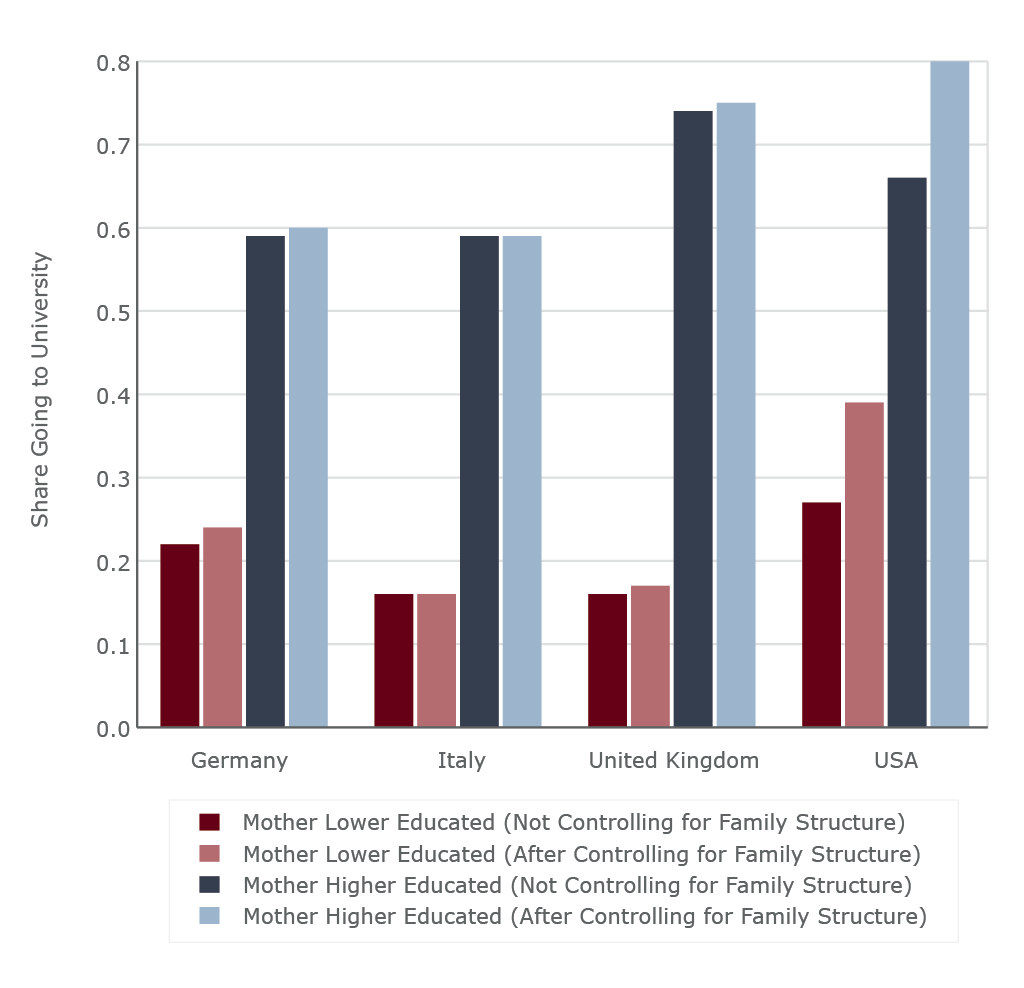Despite the recent expansion of education, children from lower socioeconomic backgrounds are still less likely to attend university than children from wealthier families. This persisting inequality in educational attainment led social scientists to explore a range of possible factors behind these unequal opportunities. Given that in many countries it is very common for children from lower socioeconomic backgrounds to live without at least one parent, family structure has often been held responsible for explaining part of the inequality of opportunities between socioeconomic groups. A recent study conducted by Fabrizio Bernardi and Diederik Boertien suggests that this claim may be unwarranted.
Using the university attainment of respondents in Germany, Italy, the United Kingdom, and the United States, the authors investigated the role played by living or not with both parents in the same household at age 16 on individuals’ educational attainment. Results from the study suggest that family structure plays a much smaller role than it was previously thought. Despite the fact that the number of non-intact families has grown considerably over the last few decades, and particularly in the lower socio-economic strata growing up in a non-intact family can only account for, at most, 2 percentage points of the differences in tertiary education between children of higher and lower educated mothers.
Figure 1 displays the university attainment of individuals with different socioeconomic backgrounds from the four countries, both when and when not controlling for family structure. While controlling for differing family structures, the authors identified that children with lower educated mothers are still much less likely to go to university than children whose mothers are more highly educated.

Figure 1. University attainment of children before and after taking family structure into account

*This PopDigest has received funding from the European Union's Seventh Framework Programme (FP7/2007-2013) under grant agreement n° 320116 for the research project FamiliesAndSocieties. FamiliesAndSocieties (www.familiesandsocieties.eu) has the aim to investigate the diversity of family forms, relationships and life courses in Europe, to assess the compatibility of existing policies with these changes, and to contribute to evidence-based policy-making. The consortium brings together 25 leading universities and research institutes in 15 European countries and three transnational civil society organizations.